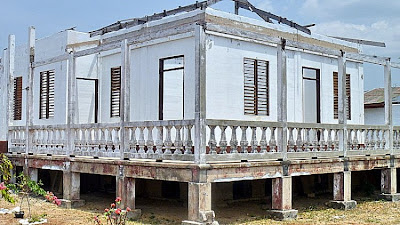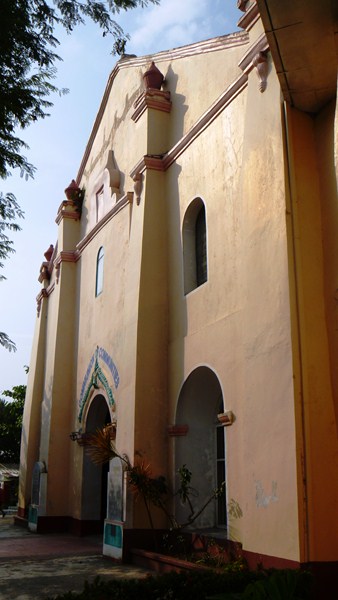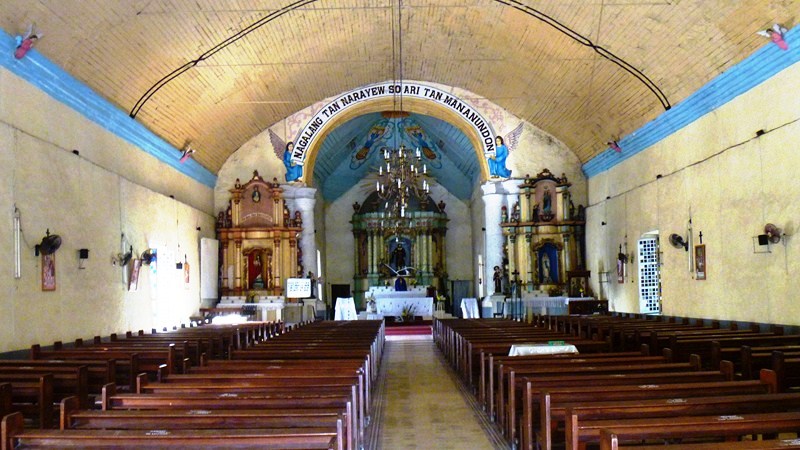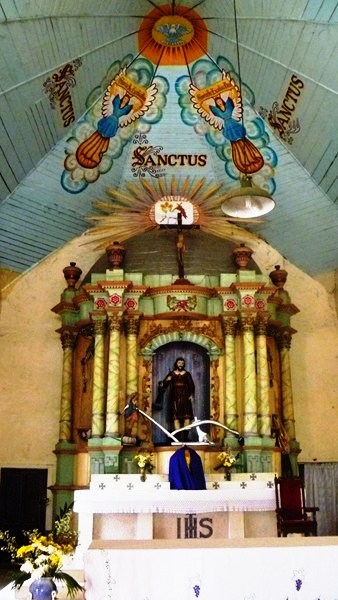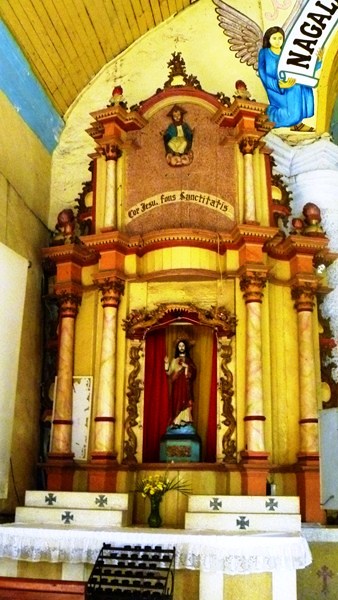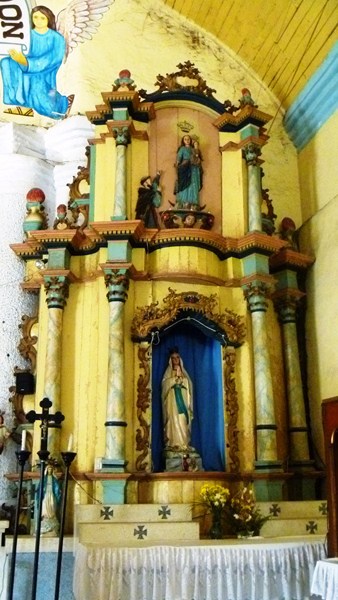 |
| The clean, multi-awarded Balingasay River |
On the way back to the Tourist Center from Enchanted Cave in Bolinao, we made a short stopover at a bridge to photograph the 7-km. long, pristine and now fishpen-free Balingasay River (Brgy. Balingasay), twice winner of the Gawad Pangulo sa Kapaligiran Award for inland bodies of water in the Ilocos Region and a recipient of the highly prestigious Wetlands Conservation Award in 1994. Set aside as a protected seascape, this river, noted for its scenic beauty and biodiversity, has 15 hectares of century-old and new growth mangroves areas, 30 hectares of of attap palms (used for nipa hut roofing), wild ferns and balete trees hanging into the water. These protect the river from erosion and pollution. Different species of wild birds (locally called kiaw and pagaw) also make their home atop the trees and wild ducks, lizards, monkeys and wild boar also make their home in the forest.
 |
| Some boats parked at the river mouth |
The Balingasay River is fed by Quibuar Spring, Bolinao Falls and several other springs and creeks. Fresh water meets the sea water of the South China Sea toward the middle of the river, a perfect environment for unique fish (malaga, lapu-lapu, etc.) and shellfish (crabs, shrimps and oysters) species to flourish. Boats from the bridge can be rented (PhP500) to explore the river which connects 5 villages to the town proper, located 5.5 kms. from the mouth of the river. Aside from regular outrigger boats, some boats that ferry villagers are made, through Filipino ingenuity, from discarded wings of World War II airplanes secured from the former U.S. Naval Base in Subic. The wings are fitted with bamboo and wood as “balancers” and then wooden seats are installed for 12 people.








